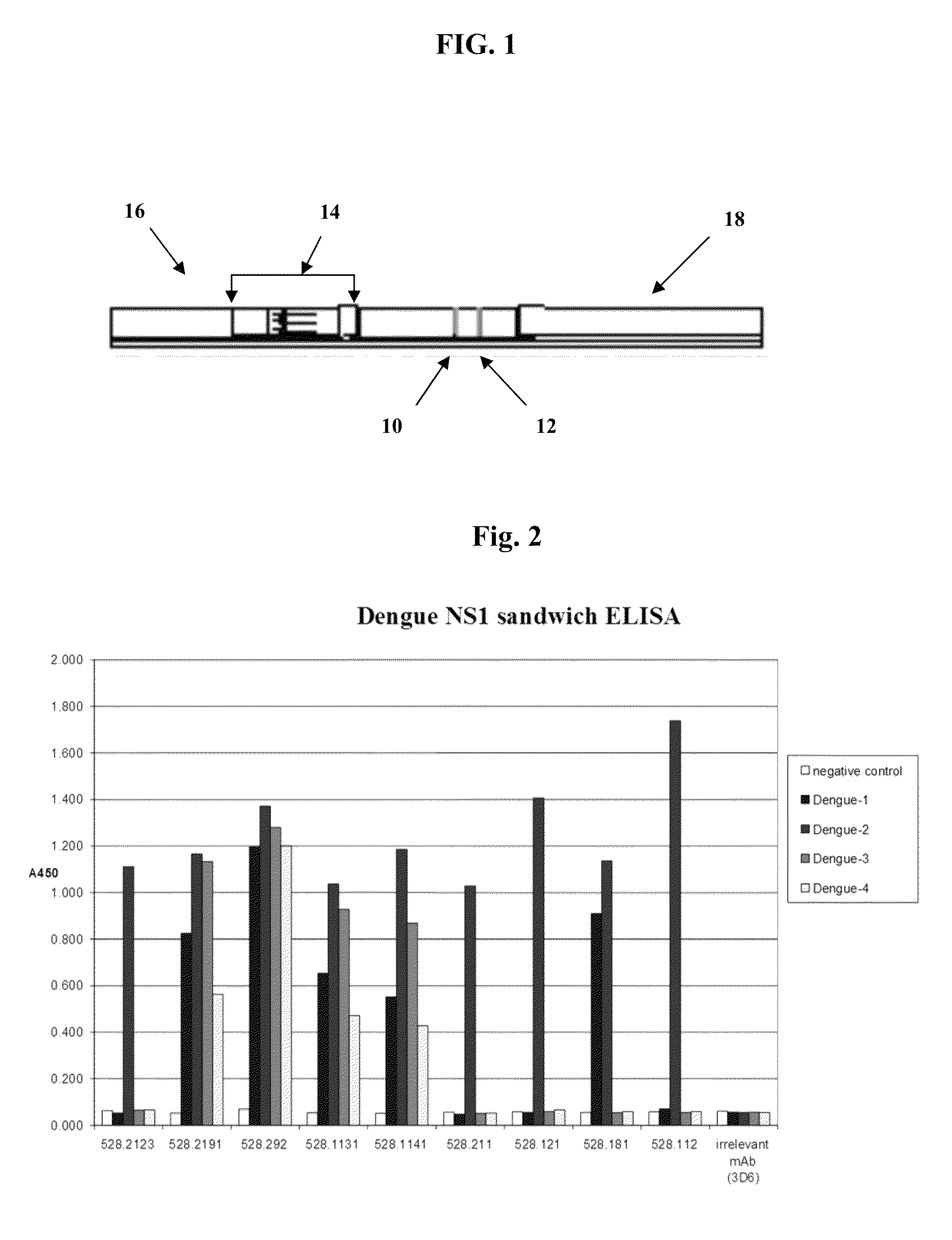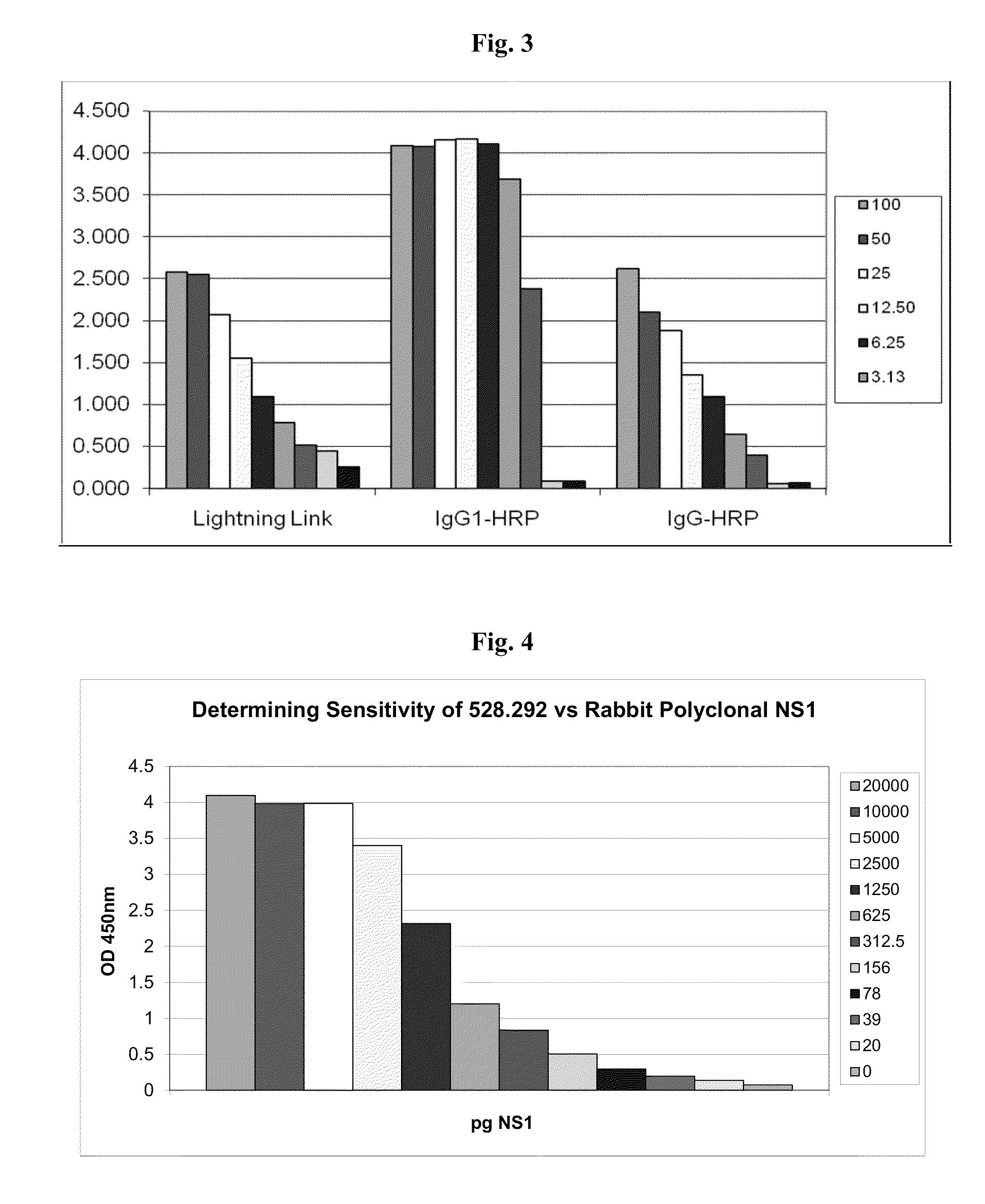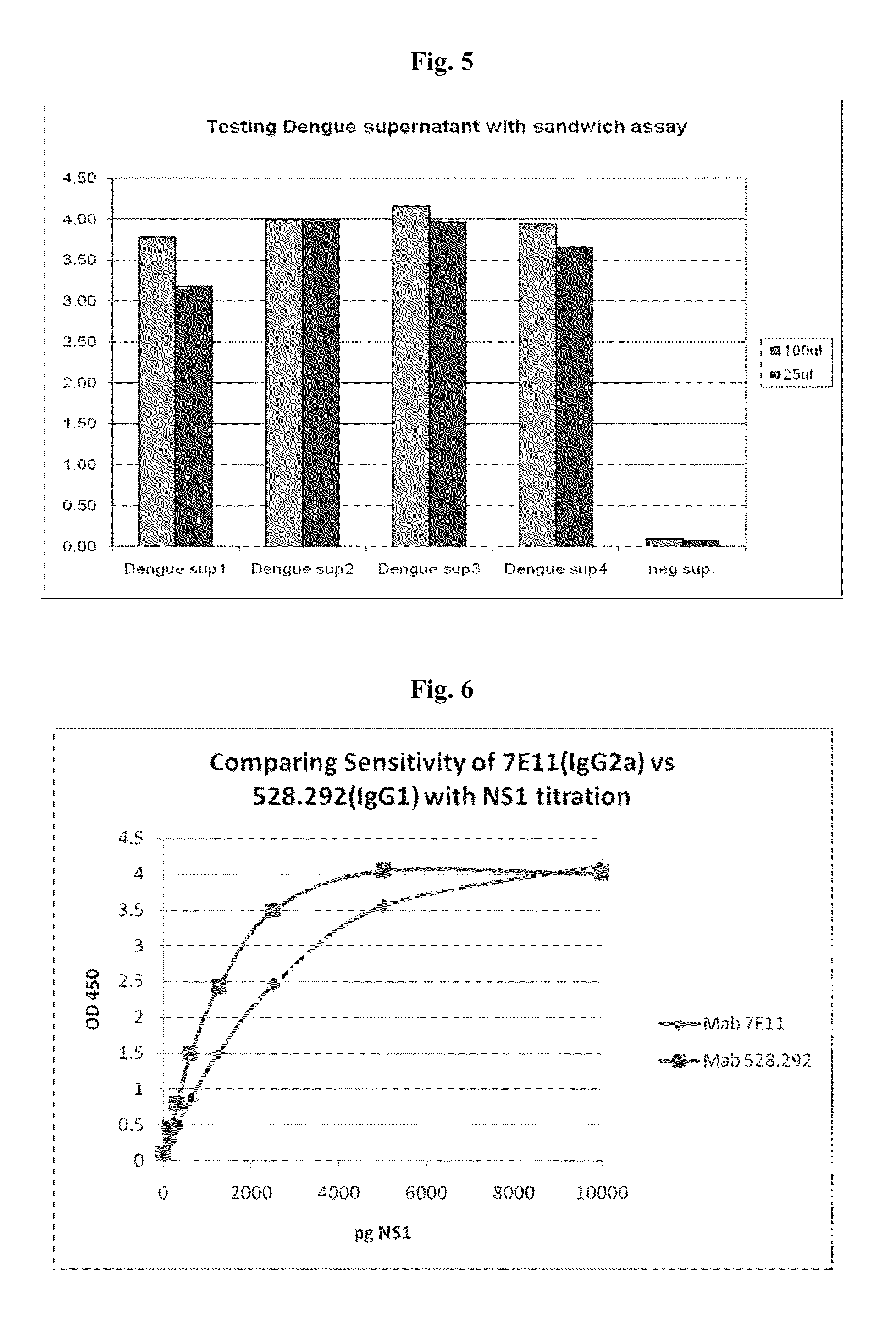Methods and materials for the detection of dengue virus infection
a technology of dengue virus and methods, applied in the field of dengue virus diagnosis, can solve the problems of high mortality rate, more severe form of illness, and does not protect against heterologous dengue serotyp
- Summary
- Abstract
- Description
- Claims
- Application Information
AI Technical Summary
Benefits of technology
Problems solved by technology
Method used
Image
Examples
example 1
Preparation of Recombinant NS1 Glycoprotein
[0057]Full-length NS1 protein was prepared using a mammalian expression system. Secreted NS1 was concentrated, purified using glass chromatography, and examined by SDS-PAGE under reducing conditions, with and without heat treatment. No heat treatment would ensure that NS1 dimers can be observed by SDS-PAGE. The results demonstrated the presence of glycosylated monomers, glycosylated dimers and a small fraction of non-glycosylated monomers and non-glycosylated dimers.
example 2
Preparation of Antibodies to NS1 Glycoprotein
[0058]Polyclonal and monoclonal antibodies against the dengue NS1 glycoprotein isolated as described above were prepared as follows.
[0059]30 μg of purified NS1 (prepared as described above) in 50 μl of PBS was emulsified with equal volume of Complete Freund's Adjuvant and injected subcutaneously into a 5 week old female Balb / c mouse. Seven days later, the same amount of NS1 emulsified with Incomplete Freund's Adjuvant was injected intraperitoneally into the same mouse. The injection was repeated once more 21 days after the initial injection. On days 42, 43 and 46, the mouse received intraperitoneal injections of 30 μg of NS1 in 50 μl of PBS without adjuvant. Two days later the animal was sacrificed, and the spleen excised under sterile conditions.
[0060]The spleen was homogenized with scissors under serum free RPMI 1640 medium, and passed through a nylon cell strainer to form a splenocyte suspension. Splenocytes were collected by centrifug...
example 3
Characterization of Antibodies Raised Against NS1
[0066]Affinity purified rabbit polyclonal antibodies to NS1 were coated onto ELISA plates (100 ng per well in 50 μl sodium carbonate / bicarbonate buffer, pH 9.6) overnight at 4° C. The wells were blocked with 200 μl per well of 5% nonfat dry milk in EWB for 1 hour at room temperature, and washed as above. Cell culture supernatants, containing dengue-1, -2, -3 and -4 serotype NS1 were reacted with plate bound rabbit antibodies, followed by incubation with NS1 specific monoclonal antibodies, and developed with goat antibodies specific for mouse immunoglobulin, labeled with horseradish peroxidase. The ELISA results were visualized as above.
[0067]As shown above in FIG. 2, the NS1-specific monoclonal antibodies (mAbs) exhibited at least four classes of specificities: monospecific to dengue-2 (e.g. mAb 528.2123, 528.211, 528.121 and 528.112); all dengue serotype-specific (“pan specific”, e.g. mAb 528.292); dengue-1 / dengue-2 specific (e.g. mA...
PUM
| Property | Measurement | Unit |
|---|---|---|
| apparent mass | aaaaa | aaaaa |
| equilibrium dissociation constant | aaaaa | aaaaa |
| volume | aaaaa | aaaaa |
Abstract
Description
Claims
Application Information
 Login to View More
Login to View More - R&D
- Intellectual Property
- Life Sciences
- Materials
- Tech Scout
- Unparalleled Data Quality
- Higher Quality Content
- 60% Fewer Hallucinations
Browse by: Latest US Patents, China's latest patents, Technical Efficacy Thesaurus, Application Domain, Technology Topic, Popular Technical Reports.
© 2025 PatSnap. All rights reserved.Legal|Privacy policy|Modern Slavery Act Transparency Statement|Sitemap|About US| Contact US: help@patsnap.com



